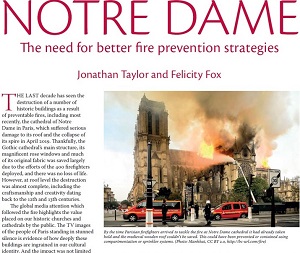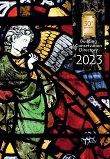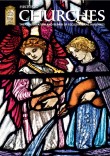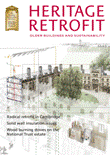ARTICLES
Advice for Authors
Cathedral Communications welcomes offers of articles from conservators, heritage consultants and other specialists on important issues likely to be encountered by those responsible for the conservation or adaptation of historic buildings and sites. Most of our articles will have been published first in either The Building Conservation Directory or Historic Churches. However, the circulation of these printed publications is mainly the UK. Articles focusing on issues outside the UK may be published online only. Before writing, please check the articles page for subjects we have covered already to minimise overlap and contact the editor, Jonathan Taylor, with a brief outline of the proposal.
General guidelines Format and length: Articles are generally two to four pages: see below for publication-specific word counts. Please include captions and credits for all the images. The captions should be self-explanatory so that the illustrations may be understood without reference to the main text. Text may be sent as a Word document by e-mail. Illustrations: Colour photographs and other illustrations must be suitable for reproduction. Digital images should be high resolution with a minimum width of 1,350 pixels. (Most website images are unsuitable.) Images need to be sent as email attachments, not embedded in the Word document. Author's biography: All articles published in the BCD include a short author’s biography. Please supply up to 40 words outlining your professional role and background. Additional information: A short recommended reading list and a glossary of technical terms should be included where relevant, but this is not an academic journal so please avoid using referenced footnotes. Copyright: All contributions will be credited to their author or originator, including text and illustrations. By contributing the material you consent to its publication in The Building Conservation Directory and on the buildingconservation.com website. If you use photographs, diagrams or other content belonging to others, please credit it to them and ensure that you have secured all necessary permissions for their use both in print in the directory and online. If you have any doubt about any copyright issues, please check with editor, Jonathan Taylor.
|
| The Building Conservation Directory |
||||
The Building Conservation Directory, published annually since 1993, is a unique resource for the UK’s historic environment, combining articles by leading specialists, sources of information and details of hundreds of specialist suppliers, consultants and conservators. In December each year over 10,000 copies are distributed to individuals and organisations with direct responsibility for the care and conservation of historic buildings and their surroundings, with thousands more reading the digital edition online. Articles in the directory should draw attention to key issues of concern, providing those involved in the conservation, repair and maintenance of historic places a useful introduction to key issues. Please write objectively to present your article as guidance rather than as a personal account, and please don’t use the first person unless unavoidable. All articles and other information included in the directory will also be published on our website BuildingConservation.com. Format and length: Articles are generally two to four pages: 2-page articles should be up to 1,700 words in length with at least two illustrations; 4-page articles should be up to 2,500 words with around six illustrations (photos and/or diagrams). Please include captions and credits for all the images. The captions should be self-explanatory so that the illustrations may be understood without reference to the main text. Text may be sent as a Word document by e-mail. |
||||
Historic Churches |
||||
Historic Churches is an annual A4 size full colour magazine. It has a circulation of 6,000 including individuals and organisations with direct responsibility for historic places of worship and their surroundings. Articles published in the magazine are intended to promote greater interest in the conservation of historic churches, chapels, cathedrals and other places of worship, their contents and fabric, and to give those involved in their conservation, repair and maintenance a useful reference source on subjects of importance. Please do not write in the first person unless unavoidable. All articles and other information published in Historic Churches will also be made available on our website, www.buildingconservation.com. It is the annual BCD Special Report on the history, repair and conservation of historic places of worship – a digital edition is available here. Please send first drafts in earlier than the final editorial deadline if possible, or to the deadline agreed with the editor, including text, illustrations and captions. Format and length: Articles are generally two to four pages: 2-page articles should be up to 1,500 words in length with at least three illustrations; 4-page articles should be up to 2,500 words with at least six illustrations (photos and/or diagrams). Please include captions and credits for all the images. The captions should be self-explanatory so that the illustrations may be understood without reference to the main text. Text may be sent as a Word document by e-mail. |
||||
Before writing, please check the articles page for subjects we have covered already to minimise overlap and contact the editor, Jonathan Taylor, with a brief outline of the proposal by phone or email: |
||||








